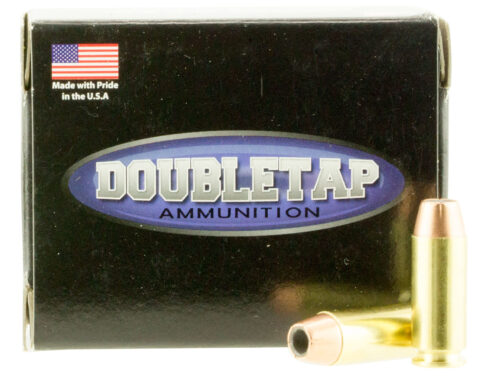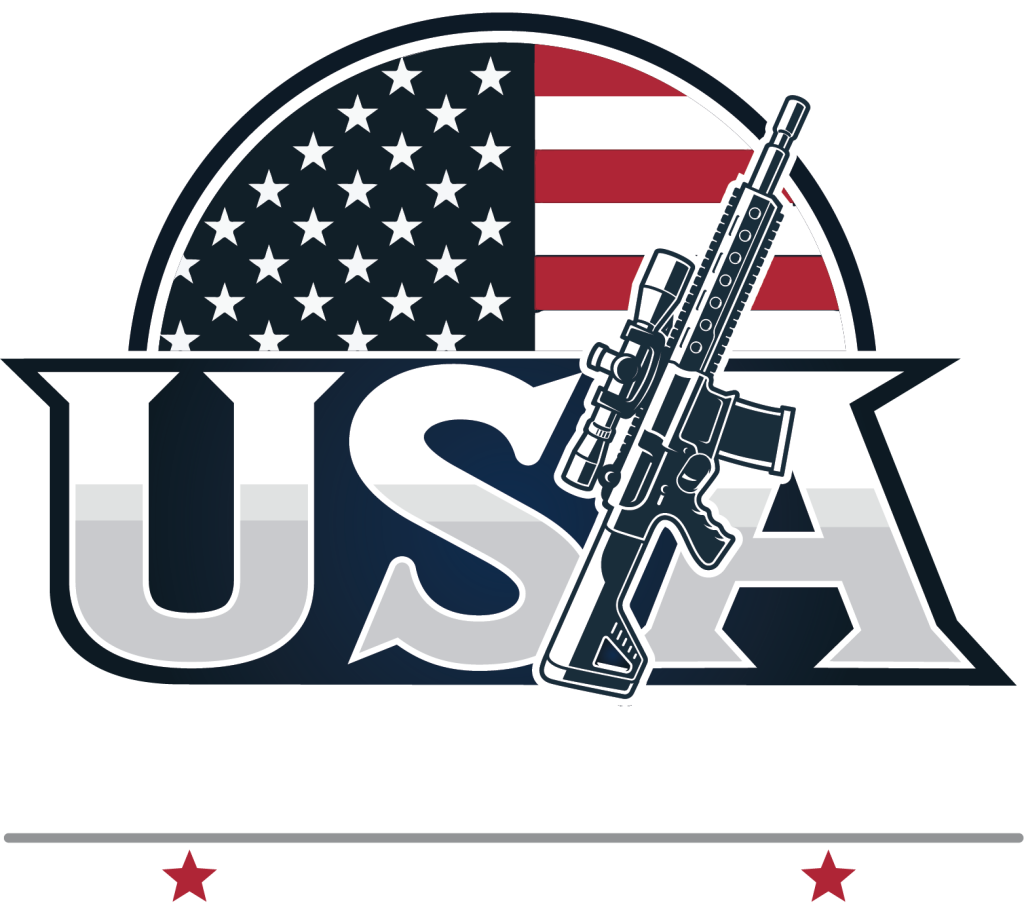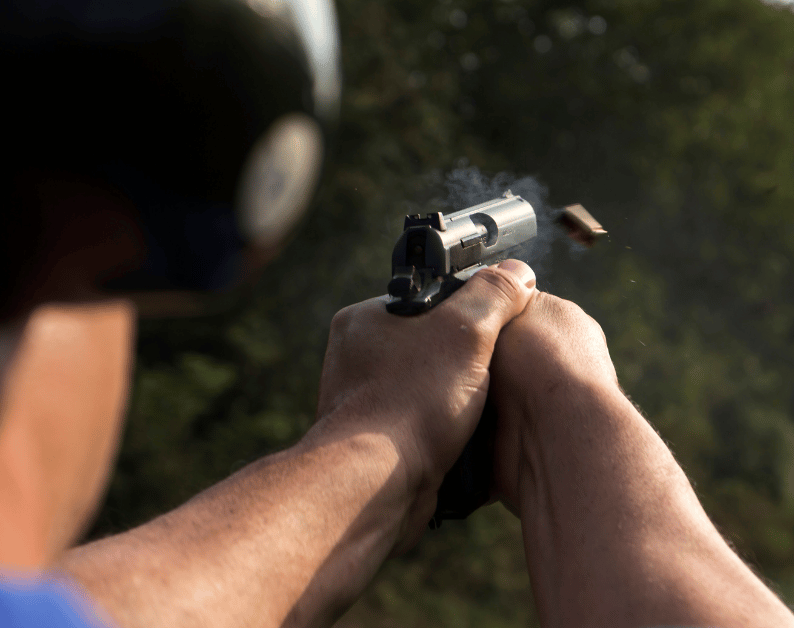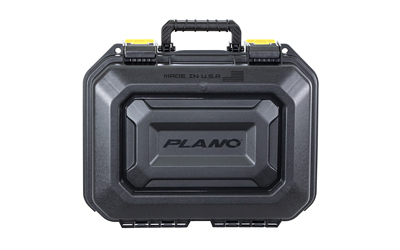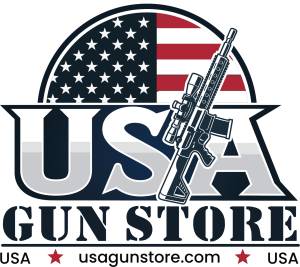Selecting the right ammunition is one of the most critical decisions any shooter makes, directly impacting safety, accuracy, and overall shooting performance. The wrong ammunition choice can lead to poor accuracy, reliability issues, or even dangerous malfunctions. Conversely, matching the appropriate ammunition to your firearm and intended use maximizes performance while maintaining safety standards.
At USA Gun Store, we understand that ammunition selection can feel overwhelming given the vast array of options available. This comprehensive guide breaks down everything you need to know about choosing ammunition that meets your specific needs and shooting goals.
Understanding Ammunition Basics and Types
Cartridge Components
Each cartridge consists of four essential components:
- Bullet: The projectile that travels downrange toward your target.
- Casing: Metal container holding all components together
- Powder: Chemical propellant that creates expanding gases
- Primer: Ignition source that ignites the powder when struck
Common Ammunition Types and Applications
Full Metal Jacket (FMJ): Features a lead core completely encased in harder metal. Ideal for target practice and training due to affordability and consistent performance. Best for high-volume practice sessions.
Hollow Point: Designed with a cavity in the bullet tip that expands upon impact. Preferred for self-defense applications because of controlled expansion and energy transfer while reducing over-penetration risks.
Soft Point: Combines features of FMJ and hollow point designs, with exposed lead at the tip. Commonly used for hunting applications where controlled expansion and penetration are desired.
Specialty Rounds: Includes frangible bullets for indoor ranges, lead-free options for environmental compliance, and match-grade ammunition for competition shooting.
Understanding Caliber
Caliber refers to the internal diameter of your firearm’s barrel and determines which ammunition your gun can safely fire. Always verify that ammunition caliber exactly matches your firearm’s specifications before purchasing or loading.
Factors to Consider When Choosing Ammunition
Intended Use and Compatibility
Target Shooting: FMJ ammunition typically provides the best value for practice sessions, offering consistent accuracy at a reasonable cost. Focus on ammunition that feeds reliably in your specific handgun, rifle, or shotgun.
Self-Defense: Hollow point ammunition is generally preferred because it expands upon impact, transferring energy more effectively in defensive scenarios.
Hunting: Soft point or controlled expansion bullets work well for hunting applications, providing the necessary penetration while expanding to create effective wound channels.
Competition: Match-grade ammunition offers superior consistency and accuracy but comes at a higher cost.
Firearm Compatibility Factors
Always consult your firearm manufacturer’s recommendations before selecting ammunition. Some firearms perform better with specific bullet weights, powder charges, or bullet designs.
Key compatibility considerations include:
- Barrel twist rate and bullet weight optimization
- Chamber dimensions and cartridge overall length
- Feeding reliability with different bullet shapes
- Pressure specifications and safety margins
Balance your performance requirements with budget constraints. Premium ammunition costs more but may provide better accuracy and consistency. For high-volume practices, budget-friendly options often provide adequate performance.
How Ammunition Choice Affects Performance
Recoil and Feeding Reliability
Different ammunition loads produce varying levels of recoil and muzzle flash. Lighter bullets typically generate less recoil, making them suitable for new shooters or extended practice sessions. Heavier bullets may produce more felt recoil but often provide better accuracy at longer distances.
Bullet shape significantly affects feeding reliability in semi-automatic firearms. Round-nose bullets typically feed more reliably than flat-nose or hollow-point designs, though modern firearms are generally designed to handle various bullet types.
Test different ammunition types in your specific firearm to identify which brands and bullet designs function most reliably. Keep records of ammunition performance to guide future purchases.
Barrel Wear and Maintenance
Some ammunition types cause more barrel wear than others. Steel-core or bi-metal jacket bullets can accelerate barrel wear compared to standard copper-jacketed bullets. Higher-velocity loads typically increase barrel wear rates.
Safety Tips and Quality Considerations
Manufacturer Recommendations and Quality Control
Always follow firearm manufacturer specifications for ammunition selection. Using ammunition outside the recommended parameters can cause dangerous pressure spikes, leading to equipment damage or injury.
Avoid using reloaded ammunition unless you have complete confidence in the reloader’s competence and quality control. Manufacturing defects in reloaded ammunition can cause dangerous malfunctions.
Inspect ammunition before use, looking for:
- Cracked or damaged cases
- Corroded primers or bullets
- Loose bullets or unusual powder residue
- Dented or deformed cartridges
Storage and Handling
Store ammunition in a cool, dry environment away from heat sources and humidity. Proper storage extends ammunition life and maintains reliability.
Online Purchasing and Emerging Technology
Buying Ammunition Online
Research sellers thoroughly before making online ammunition purchases. Look for established businesses with positive customer reviews and transparent policies regarding quality and returns.
Understand the shipping regulations in your area before ordering ammunition online. Some states have restrictions on ammunition shipments or require additional documentation. Factor shipping costs into your total ammunition expense.
Technology Advances
Modern ammunition technology continues to advance with improved bullet designs offering better accuracy and terminal performance. Lead-free ammunition options are becoming more popular due to environmental concerns and range requirements.
Polymer-tipped bullets combine the feeding reliability of pointed bullets with the expansion characteristics of hollow points. Frangible ammunition designed to break apart upon impact reduces ricochet risks and is often required at indoor shooting ranges.
Conclusion
Choosing the right ammunition requires understanding your specific needs, firearm capabilities, and intended applications. Quality ammunition matched to your firearm and shooting goals enhances accuracy, reliability, and safety.
Take time to research and test different ammunition types to find what works best for your specific situation. Keep detailed records of ammunition performance to guide future purchasing decisions.
Ready to find the perfect ammunition for your shooting needs? Explore USA Gun Store’s extensive ammunition selection featuring top brands and various cartridge types, or contact our knowledgeable team for personalized recommendations based on your specific firearm and shooting applications.
DoubleTap Ammunition 10MM135CE Home Defense 10mmAuto 135gr Jacketed Hollow Point
DoubleTap Ammunition 10MM135CE Home Defense 10mmAuto 135gr Jacketed Hollow Point 20 Per Box/50 Case